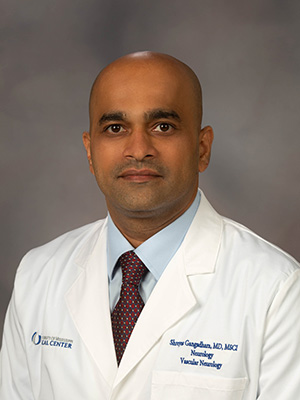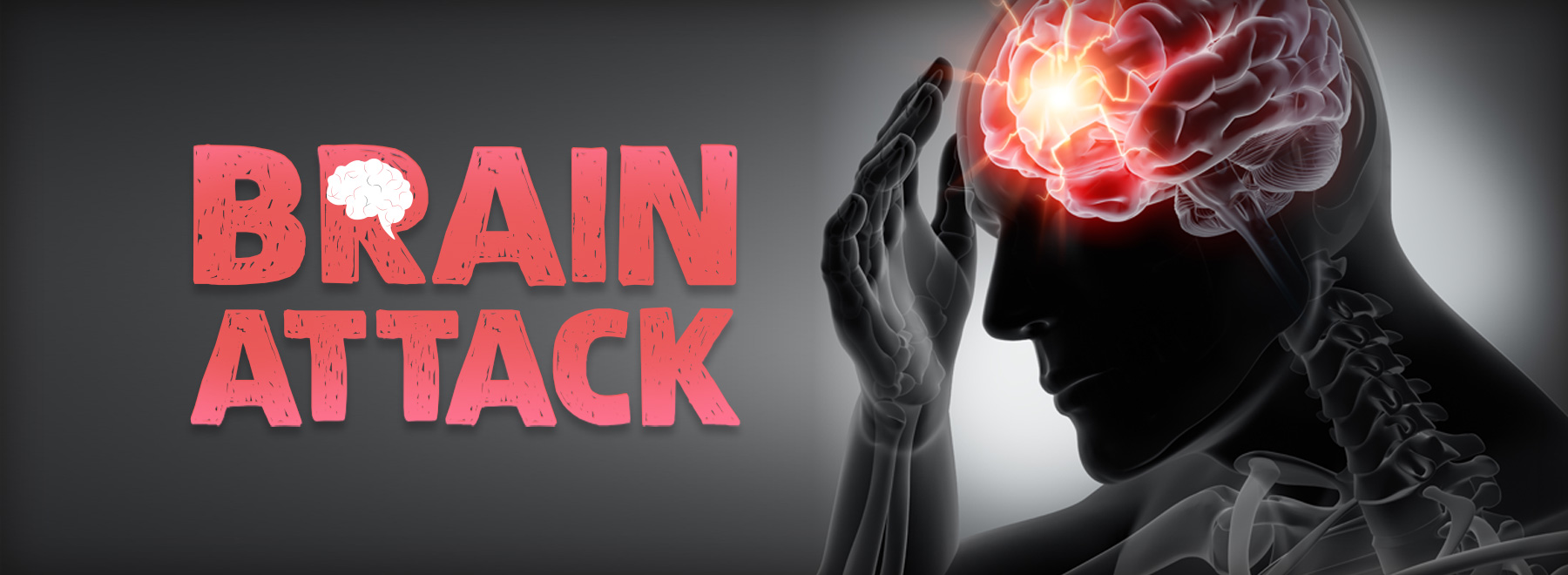Experts: Just follow your numbers to lessen stroke risk
Stroke risk is rooted in a variety of factors including high blood pressure and general stress levels – with the former easily controlled, experts say. The latter? Alas, not so much.
A wealth of information on the topic hits the health community each May, which is traditionally stroke awareness month. Curbing behaviors that has led to strokes being the fifth-leading cause of death in the United States has remained their prime challenge, UMMC neurologists and others say.

“The most common causes for stroke include many treatable risk factors such as high blood pressure, diabetes, high cholesterol, smoking,” said Dr. Shreyas Gangadhara, vice chair of clinical operations in the Department of Neurology. “Controlling these risk factors well will reduce the risk of stroke.”
About 87 percent of strokes are ischemic, which are caused by narrowed or clogged blood vessels in the brain, with the other 13 percent being hemorrhagic, when a blood vessel ruptures in or near the brain. High blood pressure, or hypertension, plays a major role in both types.
Hypertension in Mississippi remained higher than the national average in 2021, the most recent year for which statistics are available from the state Department of Health. Nearly 1 million adults in the state had high blood pressure, an increase of nearly 12 percent in a decade’s time and more than 36 percent higher than nationwide. Mortality rates in the state from strokes’ top risk factor were up nearly 23 percent in 10 years across all significant demographic groups.
Despite the consistently gloomy health stats, Gangadhara says it’s those numbers on the BP cuff that can be handled easiest of all risk factors, so long as patients heed it as a warning.
“I would encourage everybody to closely follow up with their doctor to control these risk factors, especially if your numbers are high,” Gangadhara said.
A consensus of studies and leading heart-health organizations has settled on a blood pressure reading of 130/80 or lower as the safest zone for most patients. Experts typically recommend lifestyle changes ahead of BP-lowering drugs, though calcium channel blockers are commonly prescribed in conjunction with statin drugs that lower cholesterol levels in the blood.

“One of the real tragedies we see as physicians is patients who, for any number of reasons, keep putting off getting their blood pressure treated until something like a stroke has already happened,” said Dr. Zeb Henson, professor of medicine and pediatrics and hypertension specialist. “With regular doctor visits, and good, common sense lifestyle changes, most people can attain their blood pressure goals.”
The American Stroke Association mentions socioeconomic status and psychosocial stress among factors not easily changed or difficult to control, along with aging, family history, chronic kidney disease and obstructive sleep apnea.
Henson said psychosocial factors such as stress have a complex and dynamic effect on the body, in that some stress is expected but breaking points do exist and can be wildly variable depending on the person.
“For one, we know stressful events will often lead to elevations in heart rate and blood pressure, but these are actually protective—as I tell patients, this is what happens to help you run away from the bear!” Henson said. “But chronic stress isn’t helpful. Both because of stress’ long-term effects on the blood pressure and some of its effects on our blood vessels, stress can be another small risk factor for things like strokes and heart attacks. How we handle our mental health matters for our physical health.”
Dietary guidelines continue to emphasize cutting salt intake and have limits on sweets, red and processed meats and foods high in saturated and trans-fat. The “do’s” on the food list for those actively trying to ward off their stroke risk include more fruit and vegetables, whole grains, low-fat dairy, poultry, fish, nuts and all foods rich in potassium in general.
A deeper dive into plant-based foods reveals anti-hypertensive effects that result from phytochemicals, a group of naturally-occurring compounds common in certain color berries, such as raspberries and blueberries.

“When you eat plant foods, the phytochemicals are absorbed into our blood and the liver then sends them out to the needed areas to perform a variety of disease fighting and repair actions,” said Dacia Breeden, a registered dietitian. “Fruit and vegetables act as a cleanup and repair crew, sweeping up the debris, plaques and toxins out of our bodies and repairing damaged tissues, therefore reducing the stress of our heart and blood vessels to pump oxygen nutrients more efficiently.”
The chemical compounds can also help in the effort to control blood pressure by increasing the uptake of LDL, or “bad” cholesterol. The kinds of blockages that can lead to high blood pressure is then reduced, Breeden said.
Patient populations are often a reflection of the regions in which they live, an unstated but no less important factor in treatment, said Dr. Allision Strickland, assistant professor of neurosurgery.
“Each patient’s situation is different, but also many people in our state live in rural communities where access to healthy food is a challenge,” Strickland said. “But, when it’s your health, it’s important.”
The above article appears in CONSULT, UMMC’s monthly e-newsletter sharing news about cutting-edge clinical and health science education advances and innovative biomedical research at the Medical Center and giving you tips and suggestions on how you and the people you love can live a healthier life. Click here and enter your email address to receive CONSULT free of charge. You may cancel at any time.



